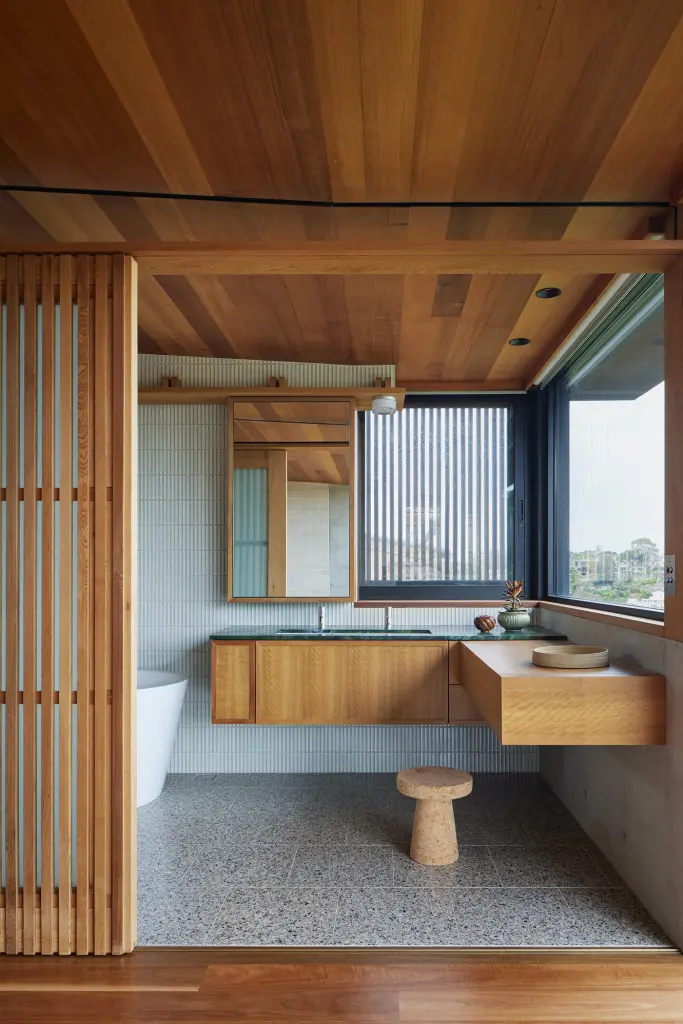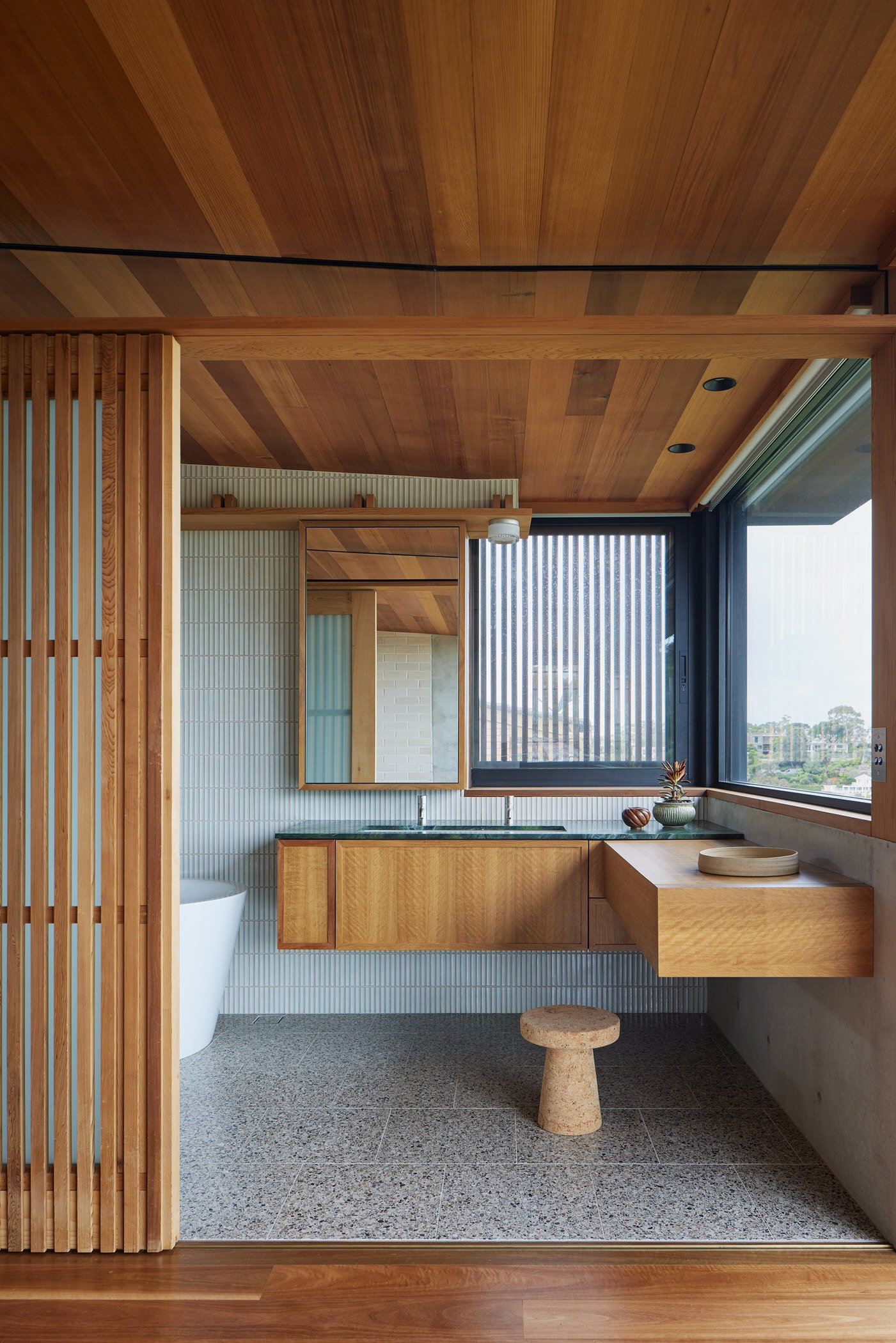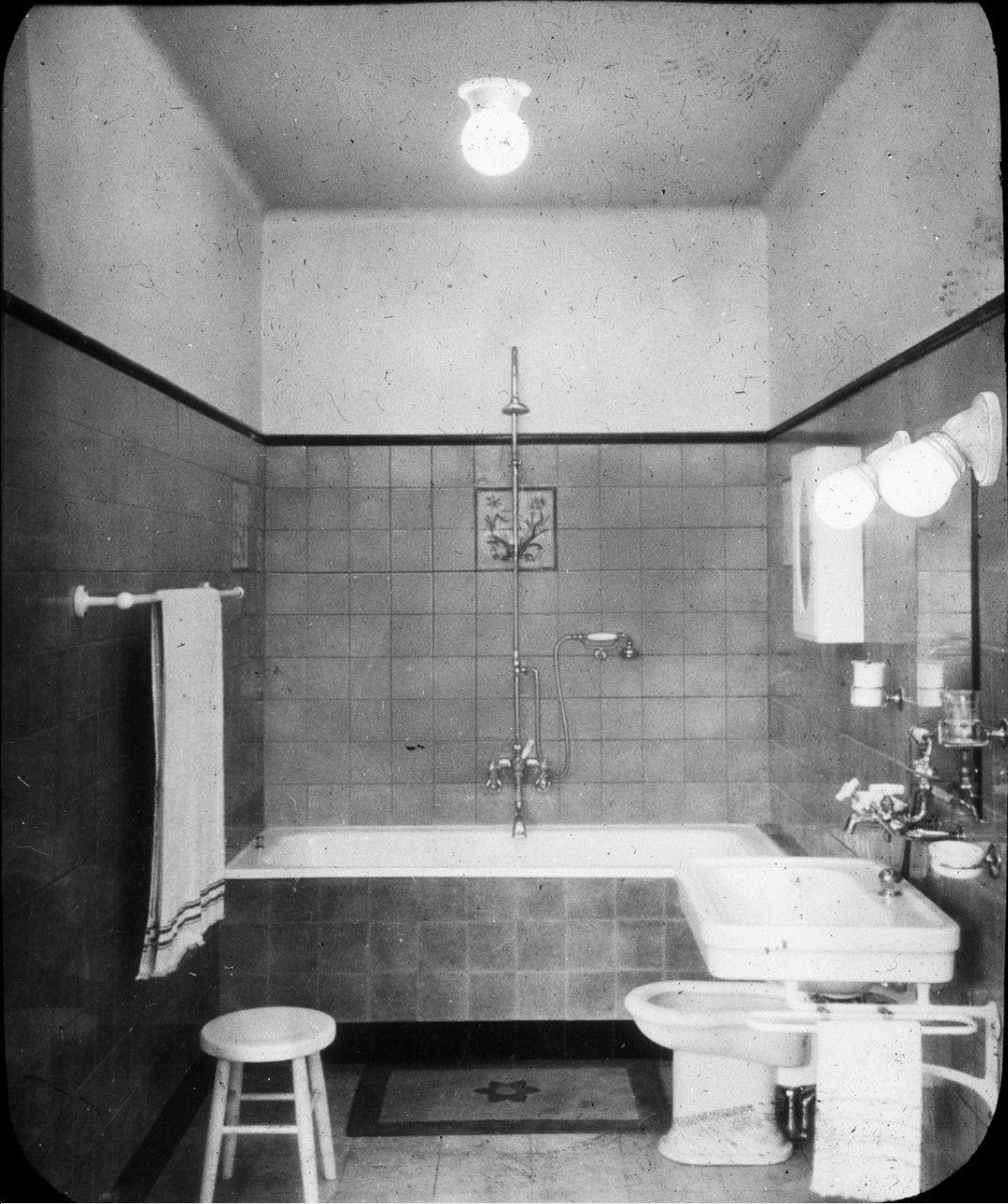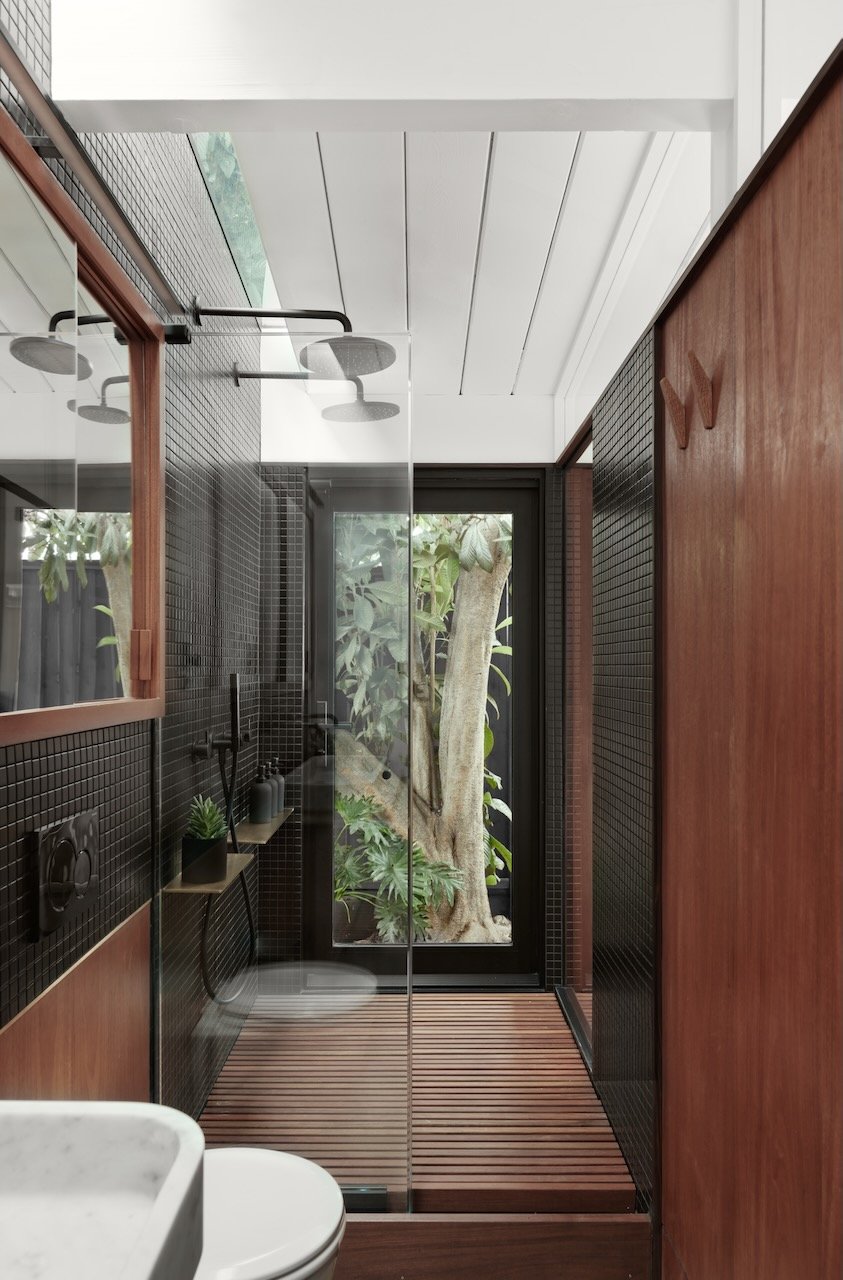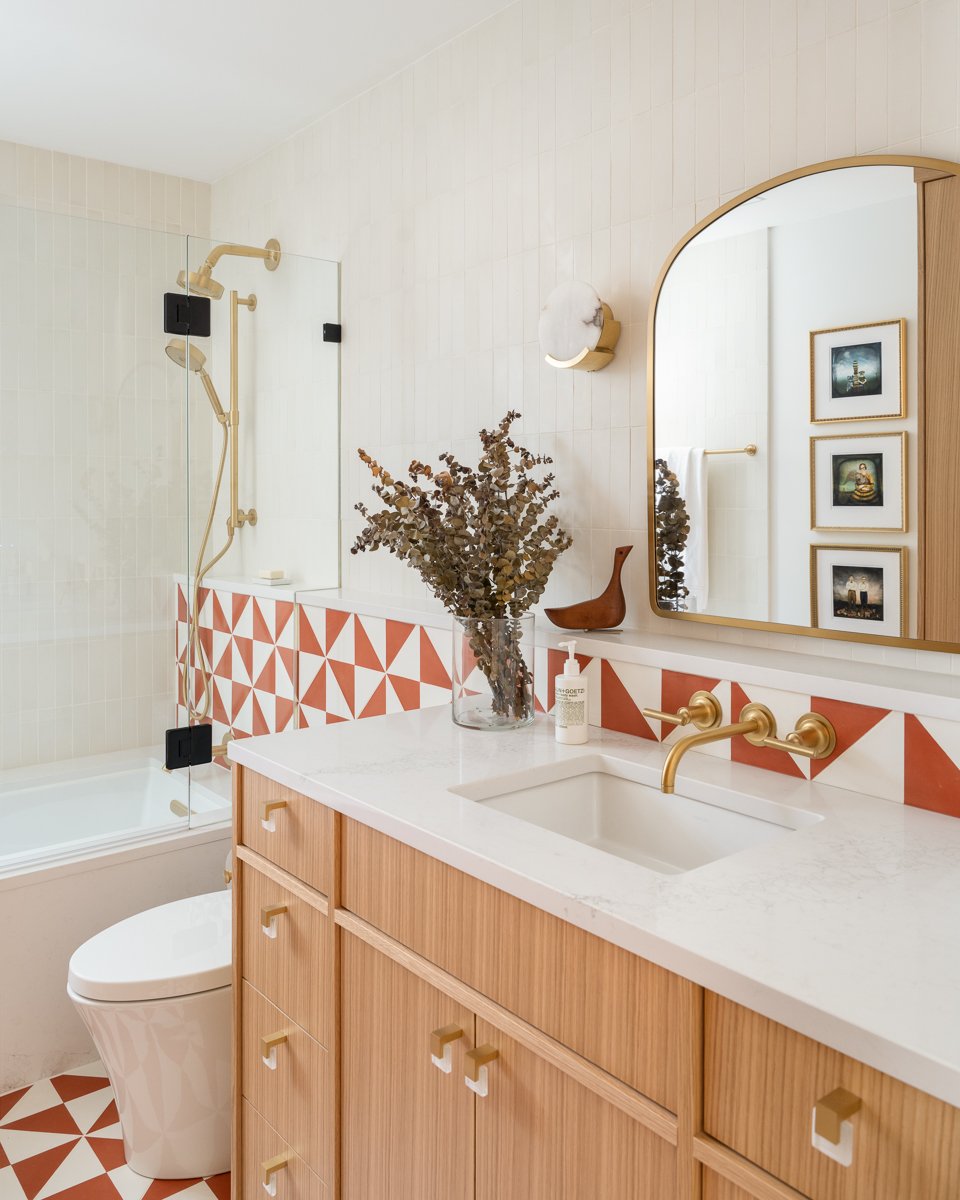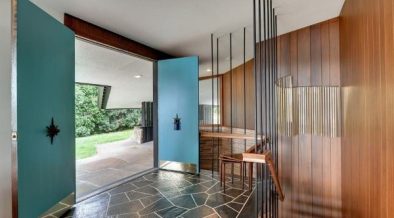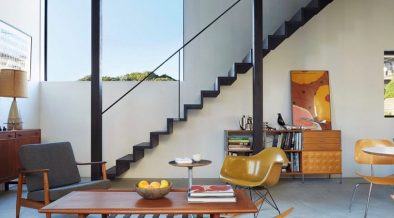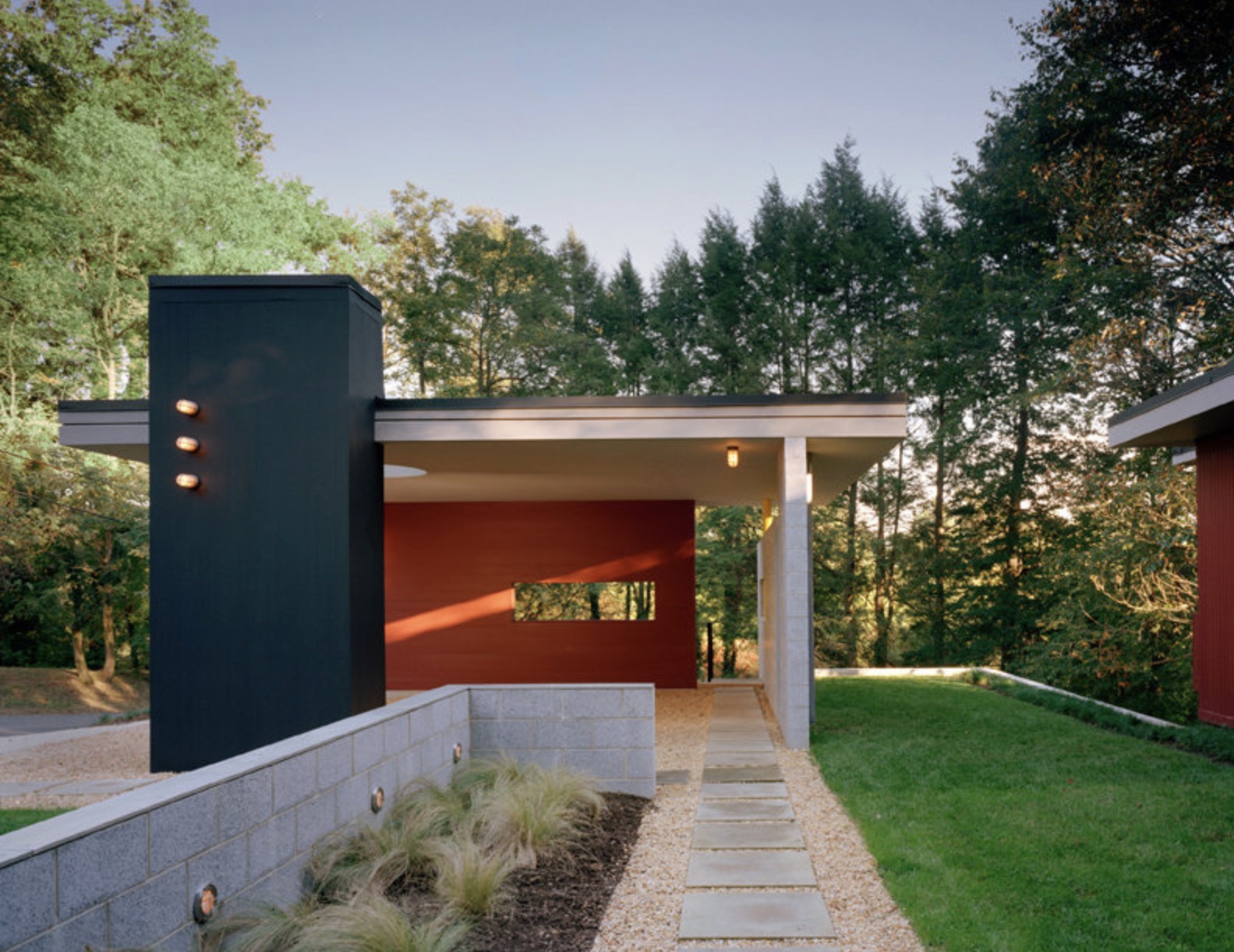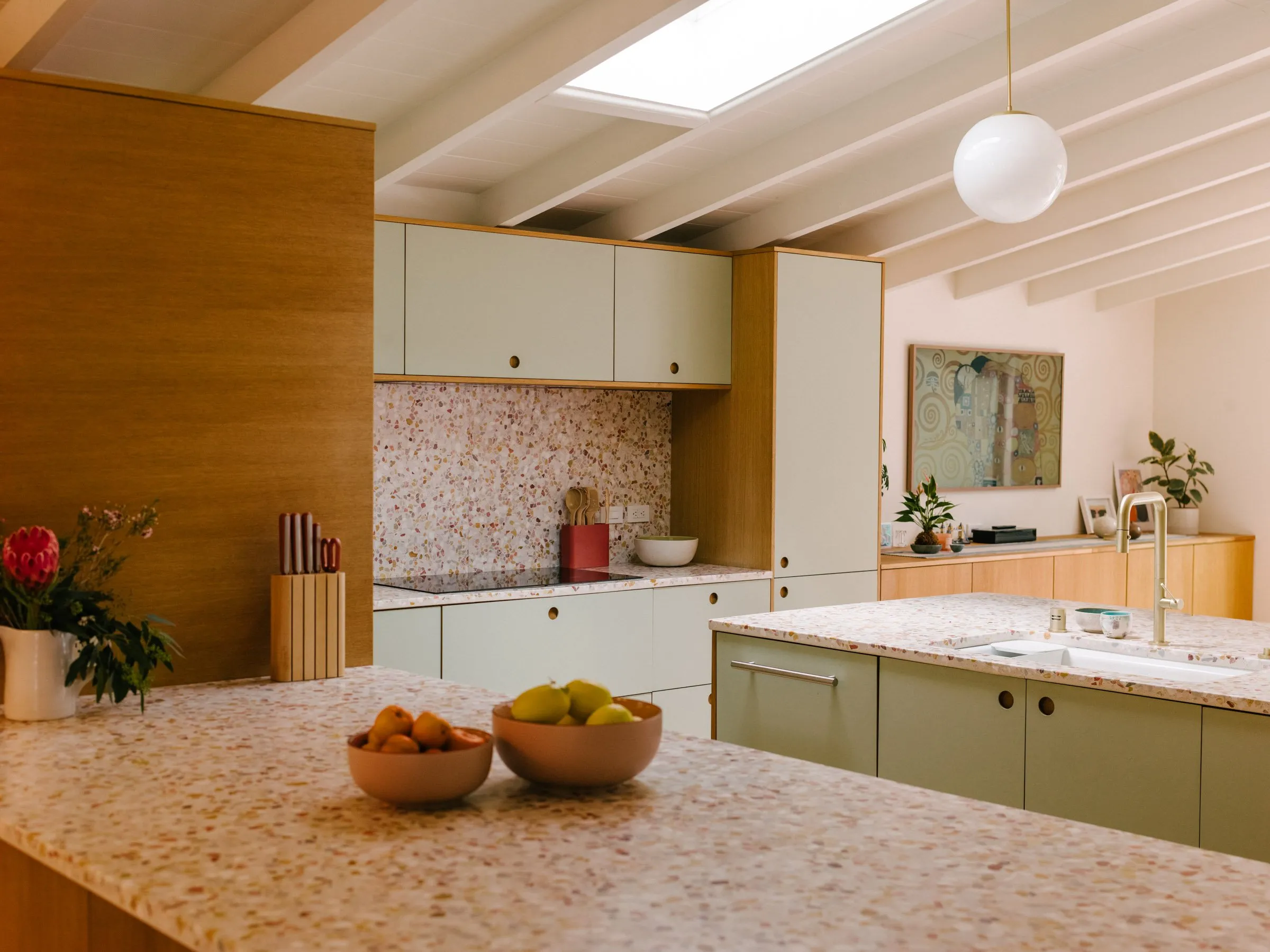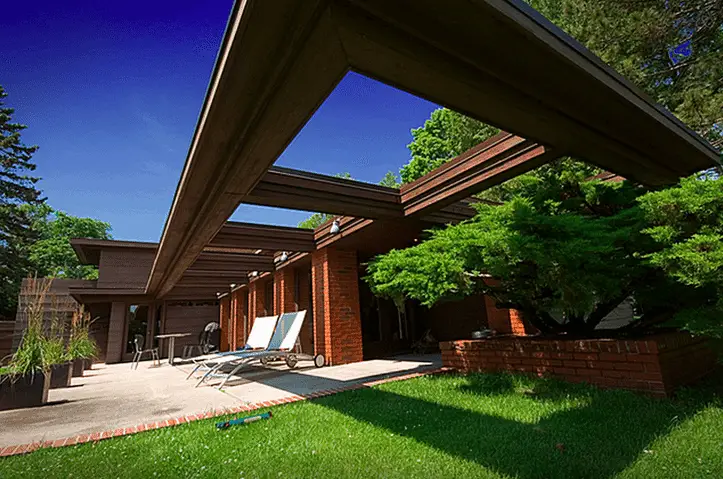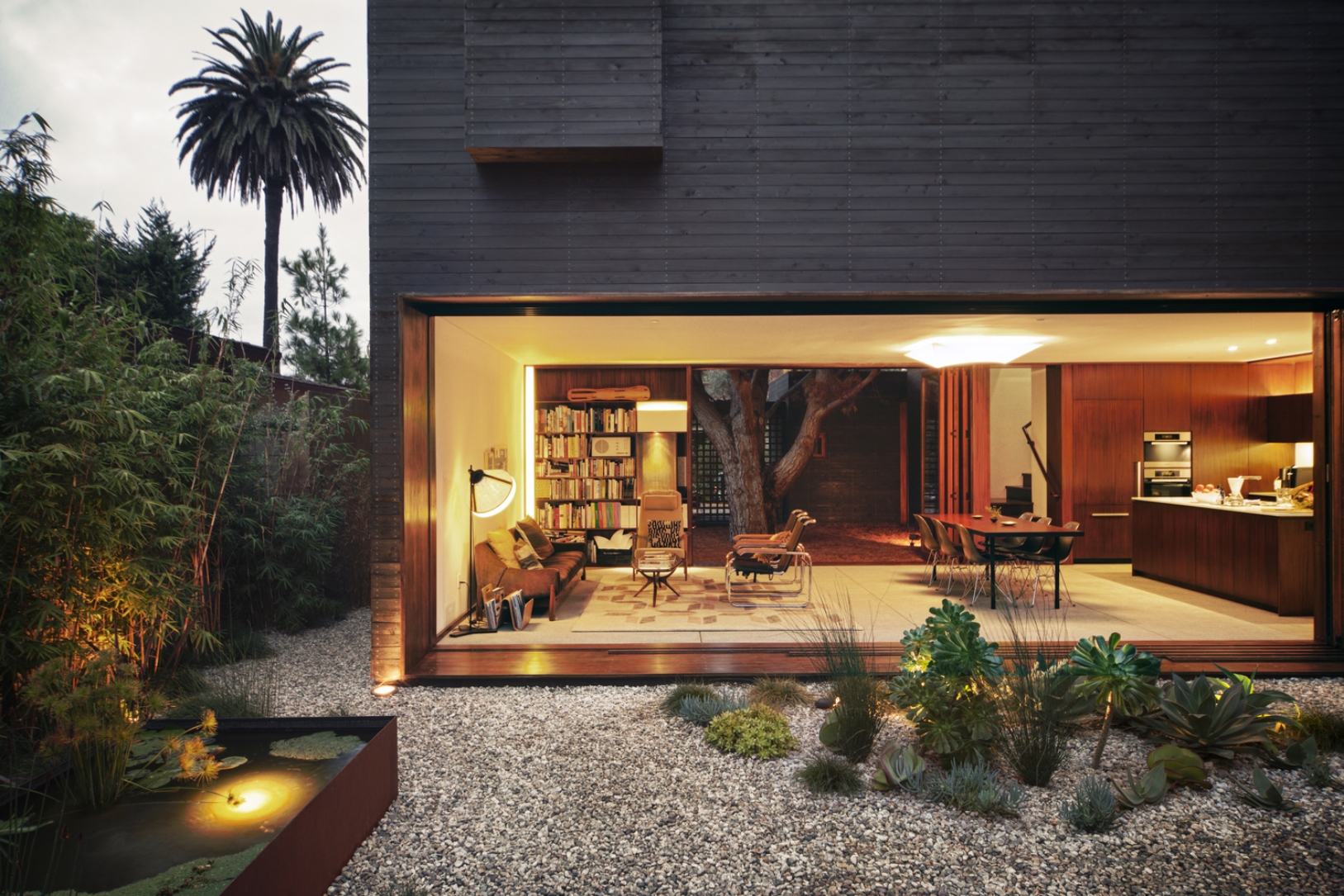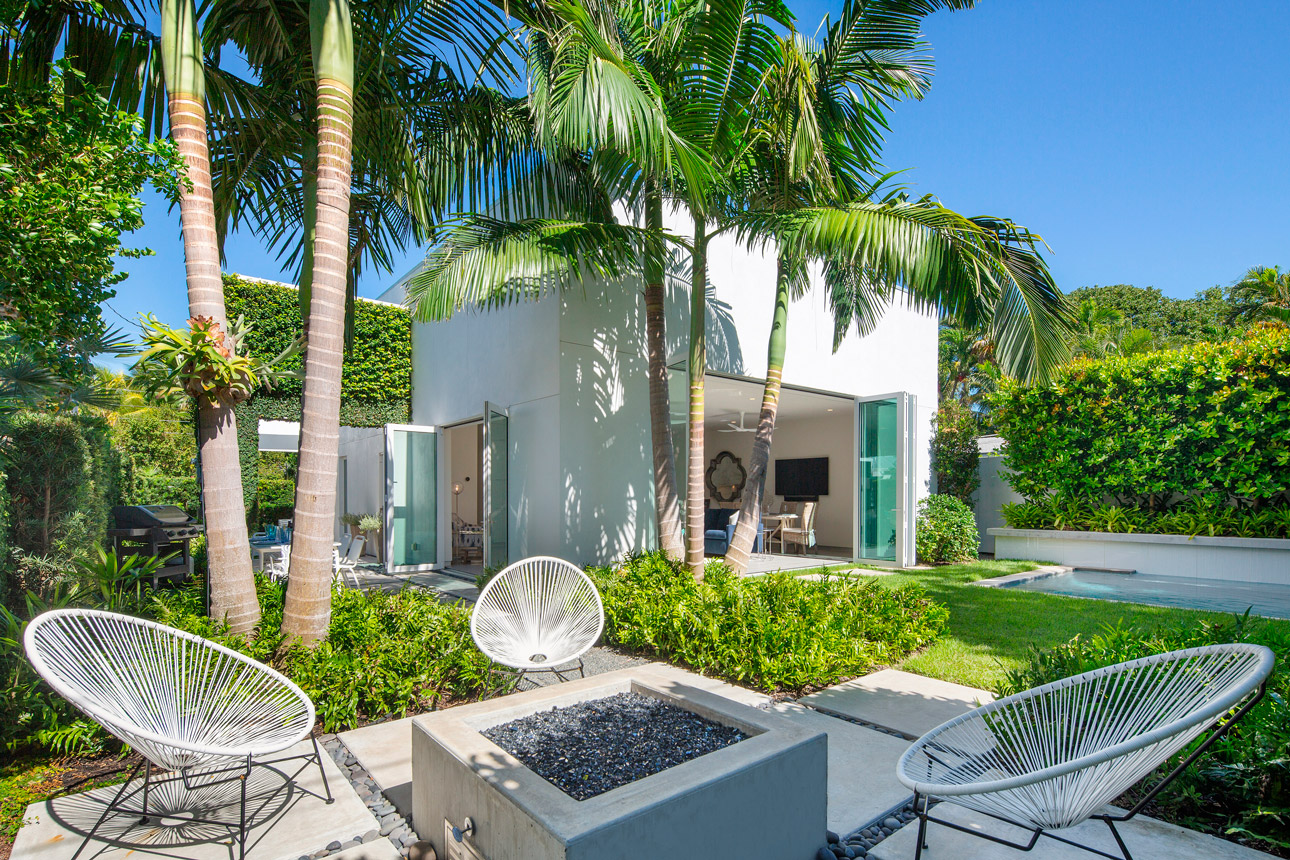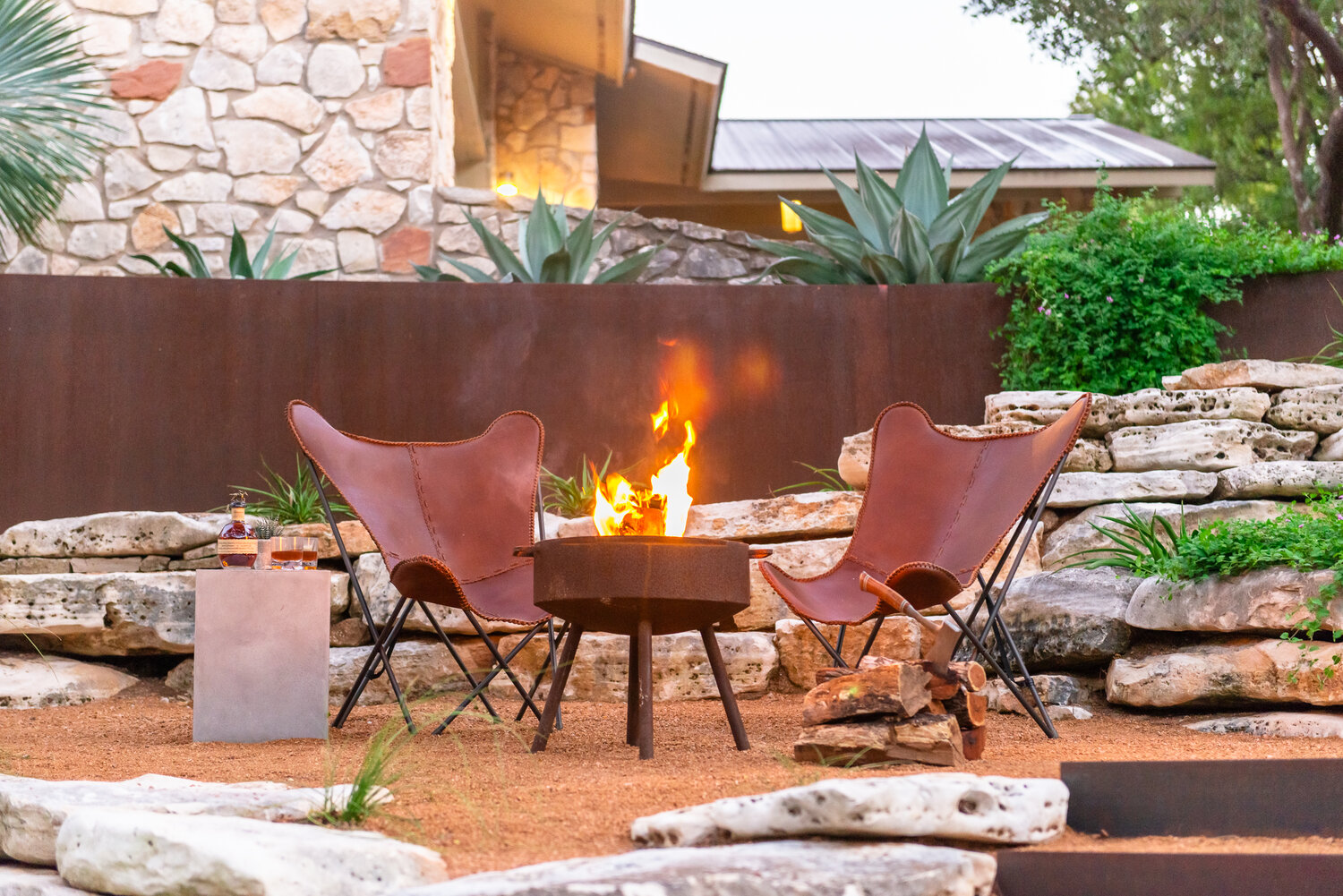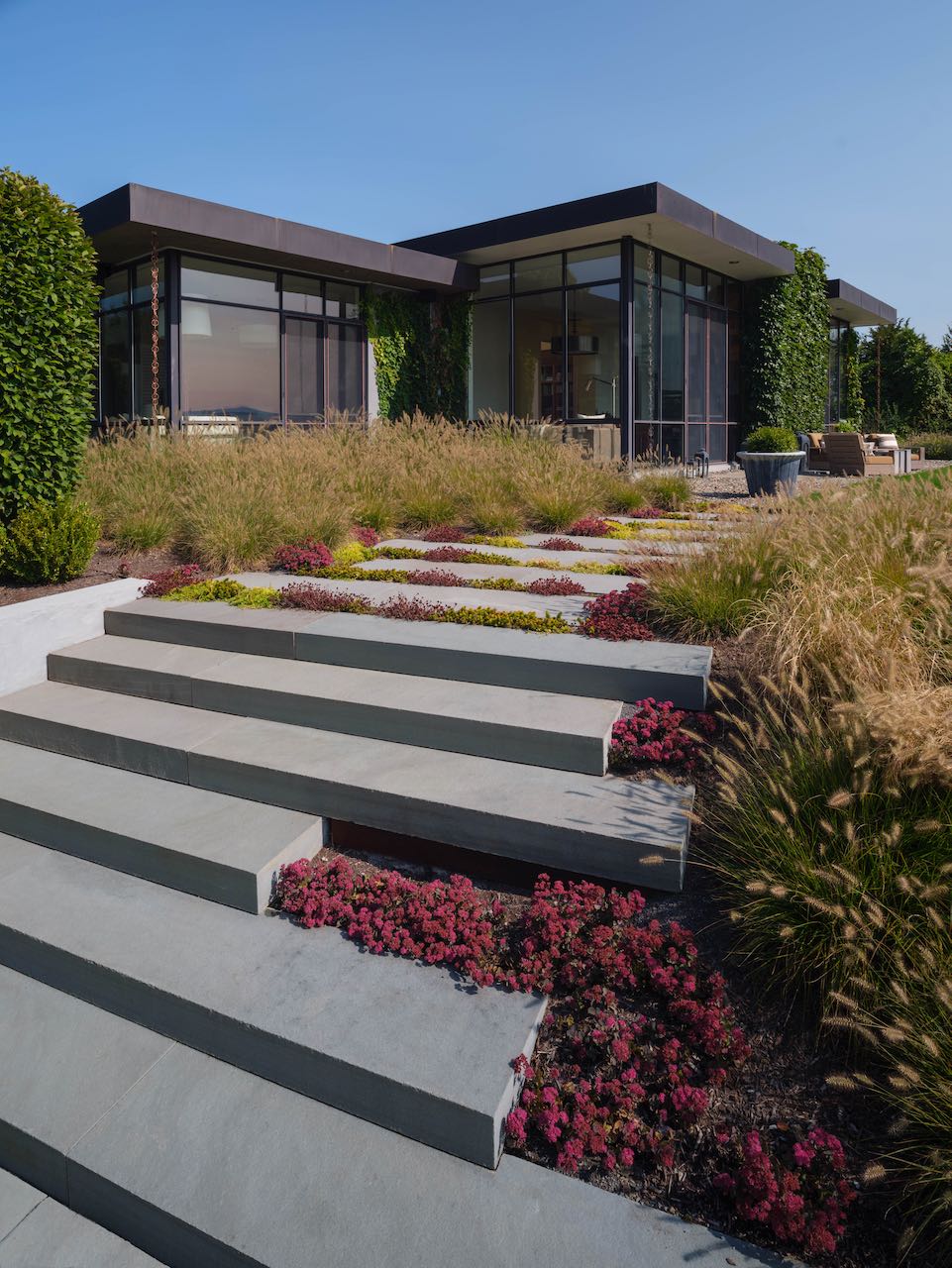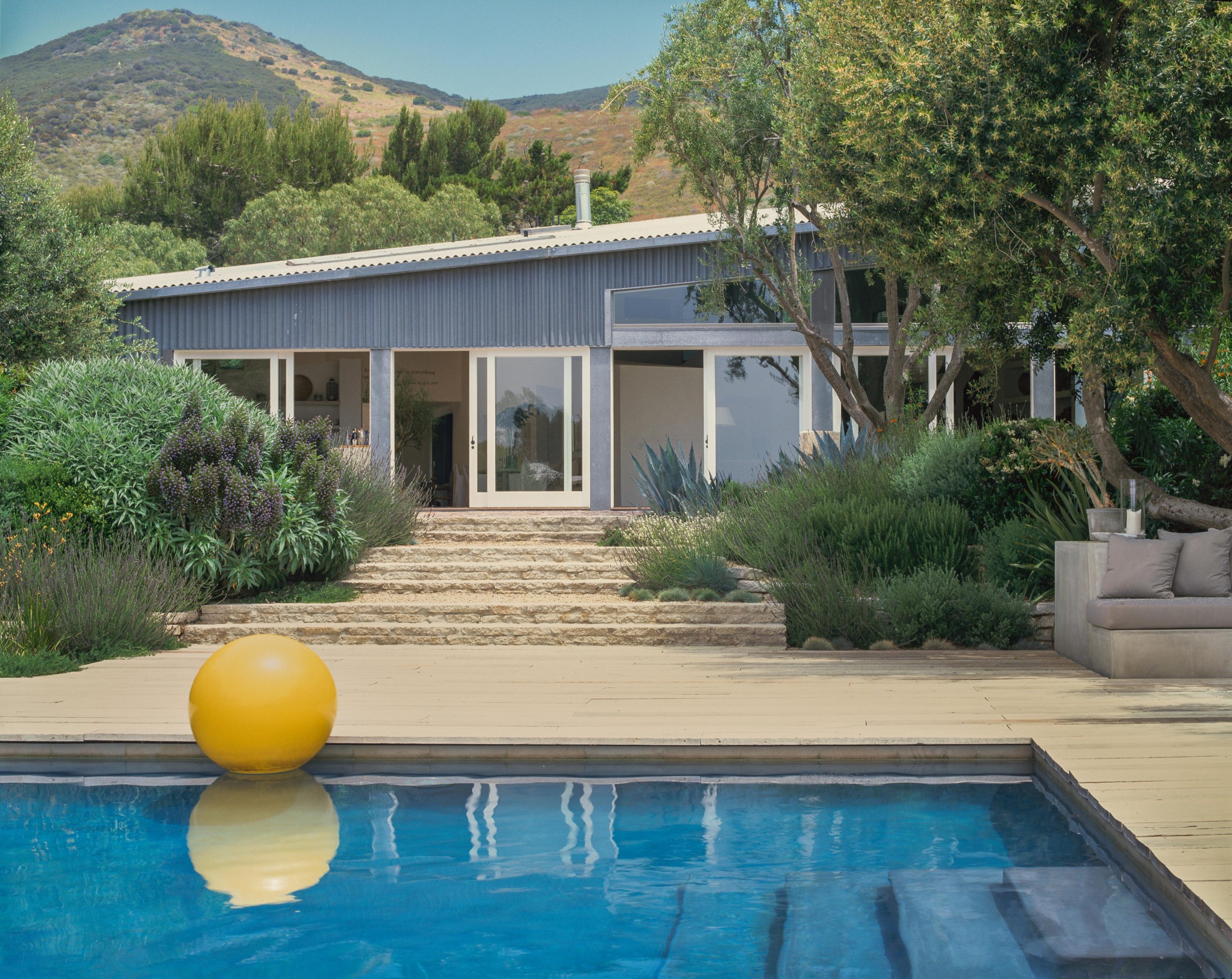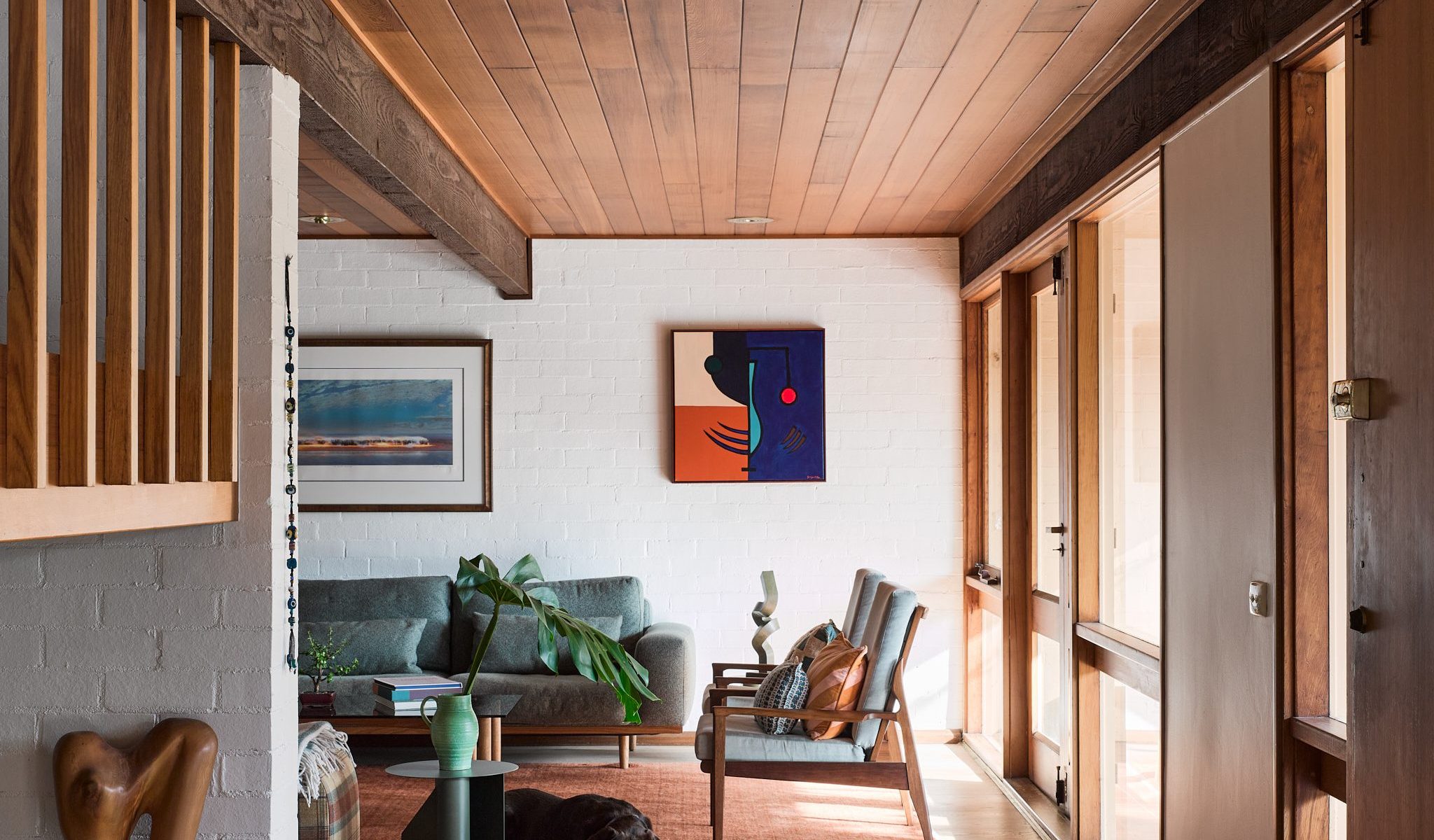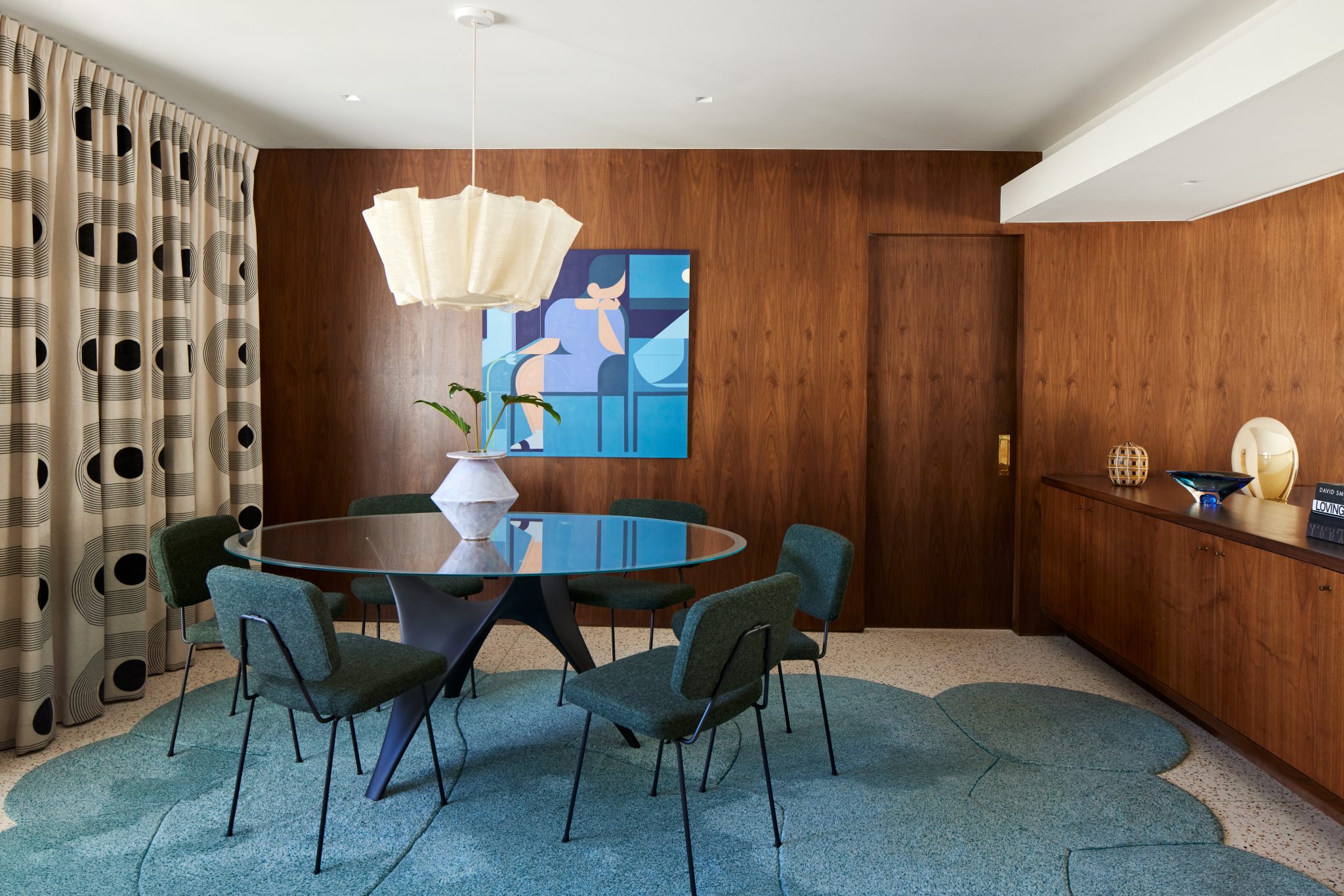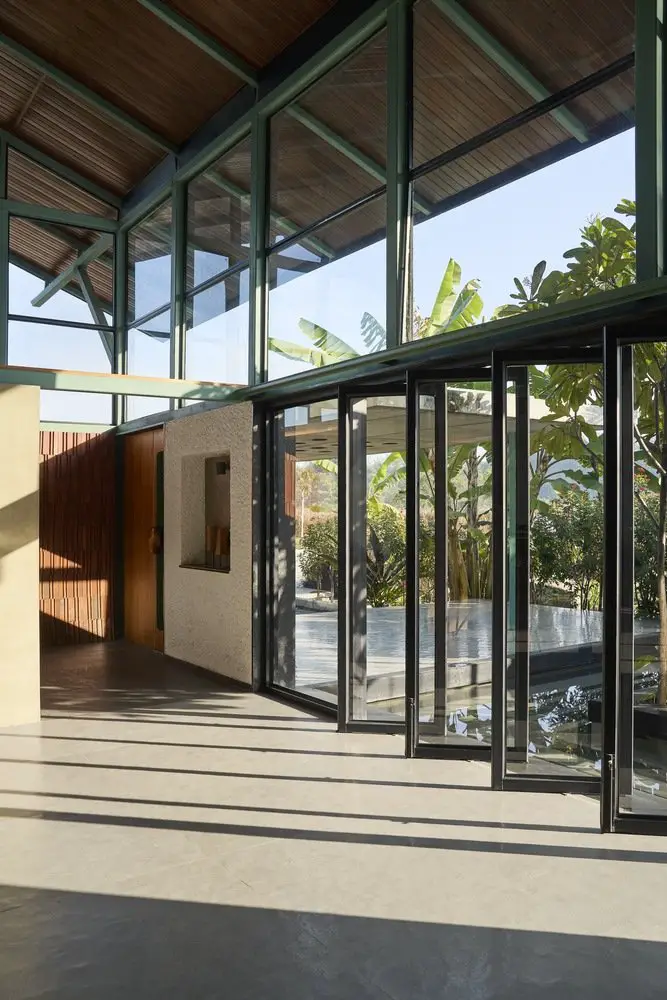Mid-century architects thought about the entire home as a system—each room doing its part, each element placed with intention. That included the bathroom. It wasn’t an afterthought or a luxury zone. It was small, efficient, and built to support the daily routine.
But that didn’t mean it lacked design. Bathrooms in mid-century homes often reflected the broader materials palette: ceramic tile in soft pink, mint green, or powder blue; vanities finished in Formica; touches of walnut or teak. Lighting was usually simple—a globe sconce or two—and everything had a clear purpose. Fixtures leaned modern and unfussy. Storage was built in, not added later. It was all part of a larger idea: that homes should be easy to live in, easy to maintain, and forward-looking without being flashy.
Fast forward to now, and the bathroom has taken on a different role. It’s still expected to do a lot—but the definition of what “a lot” means has changed. In many homes today, bathrooms are designed not just for function, but for comfort. For flexibility. For quiet. We expect a little more from the room that starts and ends the day.
Layouts have adapted. There’s more space, or at least a sense of it—thanks to floating vanities, walk-in showers, and better lighting. Storage is smarter, more modular. Materials still nod to the past, but with updates: terrazzo reborn as porcelain tile, engineered wood that handles moisture better than the real thing, surfaces that stand up to heavy use without looking like it.
Designers still borrow from the mid-century playbook, but with today’s needs in mind. A mid-century vanity might have been Formica with steel legs; today, it might be engineered walnut with a quartz top—still warm, still clean-lined, but built for different demands. Chrome fittings give way to brushed nickel or soft brass. Globe lights are now paired with dimmable LEDs or built into mirrors. Where the atmosphere was once cheerful and efficient, it now leans quieter, more restrained—but no less considered.
There’s also a shift in how we value the bathroom. In the 1950s, a bathroom was part of the floor plan. Now, it’s a potential selling point. That changes how it’s designed. Homeowners are thinking not just about how a bathroom looks, but how it feels. Heated floors, rain showers, natural light, and quieter fans are standard in many remodels—not because they’re flashy, but because they make daily life smoother. Water-saving fixtures, durable materials, and better ventilation speak to a broader awareness around sustainability and long-term value.
Some companies are doing more than referencing mid-century—they’re extending its logic into new products. Heath Ceramics continues to produce tile using original methods, with glazes like Mid-Century White, Geyser Green, and Vintage Rose that feel familiar but not dated. Fireclay Tile, meanwhile, offers a broader color spectrum and custom sizing, allowing for mid-century-inspired layouts that still feel modern. Their handmade production and matte finishes add warmth and texture without tipping into retro pastiche.
On the fixtures side, Kohler’s Artifacts collection blends vintage-inspired forms with updated finishes and functionality—lever handles, clean lines, and a choice of polished or muted metals. Vola, known for its Arne Jacobsen-designed taps, continues to offer that same sculptural minimalism in updated finishes. And Waterworks leans into transitional design with fixtures that borrow from mid-century shapes but work seamlessly in contemporary spaces.
So, if you are still wondering if it is possible to bring mid-century character into a modern bathroom without making it feel like a set piece, the answer is yes.

